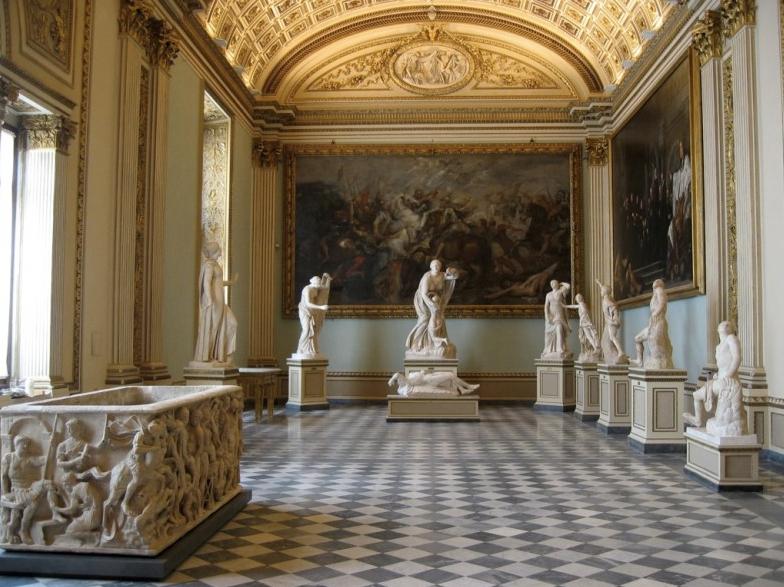The Galleria degli Uffizi (Uffizi Gallery) in Florence has reopened the Sala della Niobe (Niobe Room) together with two new rooms.
One of the oldest museums in the world and housed in a vast 16th-century palace, the Uffizi has re-opened the Niobe Room after a period of closure due to urgent restoration work. Of the two new spaces, one is dedicated to works of Giorgio Vasari and Bronzino, and other is dedicated to painters of the 16th century and in particular to Tuscan masters such as Andrea del Sarto.
The Niobe Room was the brainchild of Grand Duke Pietro Leopold of Lorraine, who commissioned the architect Gasparre M Paoletti to build it to hold a group of statues. The statuary depicts the Greek mythological figure Niobe and her 14 children, and is a Roman copy of an original Hellenistic work dating to the 2nd to 3rd century BC.
The latest renovation follows an initial attempt at restoring the Niobe Room in 2006. The room was closed in May 2012 because the weight of its 17 marble statues was found to have sunk the floor. The complex restoration work cost approximately €500,000 and involved removing the moving parts of the paved floor piece by piece, before reinforcing it.
Vasari is famous for his book ‘Le Vite de’ più eccellenti pittori, scultori, e architettori da Cimabue insino a’ tempi nostri’ (Lives of the Most Excellent Italian Painters, Sculptors, and Architects, from Cimabue to Our Times) published in 1550, which contains biographies of Renaissance artists and is considered to be the first important book on art history. However, he was a Mannerist painter and architect as well as a writer.
Agnolo di Cosimo di Mariano, known as Bronzino, is thought to have been given his soubriquet in reference to his relatively dark skin. He is known for his allegorical portraits and religious works.
After more than 200 years, the imposing statue of the Arianna Addormentata (Sleeping Ariadne) has also come back to the Uffizi. The artwork, dating from the 3rd century AD, forms part of the new set-up in Hall 35 dedicated to Michelangelo.









